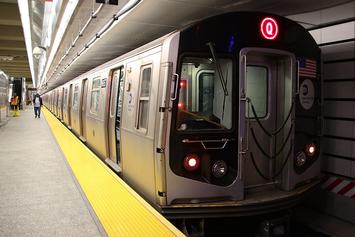
The Coronavirus public health emergency is an existentialist crisis for many sectors of the U.S. economy and government services. The transit industry is one of the most impacted of all.
Transit began losing relevance decades prior to this event. Transit ridership and transportation market share have decreased even as operating costs and taxpayer subsidies increased. Expenditures for major capital projects have reached a billion dollars per mile and more while essential services for transportation-disadvantaged residents have withered away.
Transit riders’ response to the Coronavirus was to vote with their seats away from transit. At the outset of the shutdown, New York subway ridership and San Francisco BART both dropped 94%. Nationally, ridership was down well over three-quarters. Shelter-in-place orders in every major city were the main cause, but residents remain well aware that subway and bus rides are the very model of the behavior they are strongly cautioned to avoid. Before the crisis, nationally, transit carried about 5% of commute trips and under 2% of total trips. The New York City metropolitan area, the world epicenter for Coronavirus, accounts for 6% of the nation’s population but over 40% of the nation’s pre-Corona transit use. During this emergency, transit has become something to be avoided if at all possible. It is hardly a “vital service.”
When the crisis is over – whenever that will be and whatever it will mean – transit ridership will likely return slowly. The gradual restart of economic activity means that traffic congestion will take months to return to previous levels. Gasoline prices are at levels never seen by younger drivers, and auto prices will drop. Last year, the number of people working at home surpassed those taking transit to work. What expanded as an emergency tactic likely will become a major aspect of the new normal. The densification of cities urged by planners and developers, with promotion of transit’s role as a major rationale, will face new opposition over concerns about the next pandemic, or the next wave of this pandemic.
The transit industry is financially devastated. In 2018, transit’s total U.S. operating expenses were $52.3 billion and total taxpayer operating subsidies were $33.4 billion, including $8.9 billion in federal funds available for operations. Before the crisis, transit fare revenue was under 25% of total transit operating and capital expenditures nationally, but far more for New York City’s and most other major urban transit systems. This revenue stream has all but disappeared, with many transit operators eliminating fares entirely. Revenues from taxes dedicated to transit, such as sales taxes, are reduced as a result of the national lockdown and incremental economic restart. State and local governments will not be able to shift their own greatly diminished funds to little-used transit systems while simultaneously scrambling to deliver public safety services and to provide general assistance for the many residents who have lost their incomes.
The lobbying arm of the U.S. transit industry, the American Public Transportation Association, asked Congress for $16 billion in additional Federal aid. The Coronavirus Aid, Relief, and Economic Security (CARES) Act awarded $25 billion, which is nearly half of the industry’s total annual operating costs, to be used as each metro or rural area chooses for operations or capital expenditures. Local funding match requirements were eliminated.
As transit ridership cratered, transit operators were slow to reduce service and operating costs even as riders disappeared. Over 60% of transit operating costs are labor. Still, the CARES Act specifically allows for payment of salaries, wages, and benefits to government transit employees who have been sent home because there is no work for them, and to those that fear, quite reasonably, for their safety and that of their families if they work. No such provisions extend to transit workers employed by private-sector contractors.
The dedicated transit industry workers who continued to serve the medical workers, first responders, and vital service workers who have no other means of getting to their work sites deserve our greatest respect. Over 100 transit workers died from Coronavirus, presumably contracted while doing their jobs in the service of others.
Ensuring funding so that the transit industry will be able to serve those that need it most after the current emergency recedes makes sense, but why provide the transit industry and its employees with greater funding and benefits than other sectors of the economy occupied by workers who are more important in this crisis? Many vital private sector workers, from grocery store clerks to construction contractors, are experiencing far more financial harm than transit workers. Los Angeles’ Mayor Eric Garcetti proposed a budget that calls for most workers to take 26 furlough days next year, in effect a 10% pay cut. This means much necessary work will be delayed or not performed.
Any employer or industry wants to protect its workers and its own existence and relevance, but why has the transit industry received such special treatment? Transit was in ongoing decline before the current crisis. The Coronavirus public health crisis will significantly reshape much of the fabric of American life, not the least of which will be transportation requirements. The terms and level of CARES Act funding specific to transit will only encourage the industry to continue operating as if nothing has changed, which, perversely, will only hasten its obsolescence.
James E. Moore is a Professor of Engineering and Public Policy at USC, and director of the Transportation Engineering program.
Photo credit: Mtattrain via Wikimedia under CC 4.0 License.












